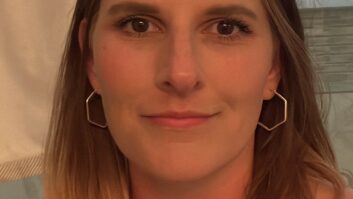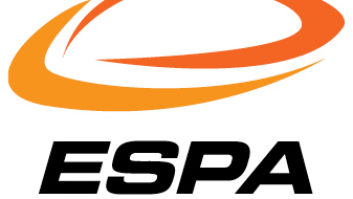What did you want to be when you were young? An astronaut? A firefighter? I think it’s safe to say almost no one grew up dreaming of being a custom integrator. But like most paths through life, chance and circumstances have led us to places we’d never expect. That’s not to say that this industry was totally outside of anyone’s imagination–as children, who wasn’t at least a little bit enchanted by cartoon visions of futuristic “homes of tomorrow?” By luck, we’re now close observers of this kind of fantasy becoming a very practical reality.
Some of the brightest stars of the industry–the men and women who are making this reality possible–are here somewhat unexpectedly, too. At some point, a door of opportunity to this marvelous niche of a field opened, and they strode boldly through. The following is a selection of rising leaders of custom integration who are finding success in the confluence of talent, hard work, and a little bit of serendipity.

Bruce Lindsay
From Military Robotics to CI
Before joining the CI business, Bruce Lindsay, partner and lead integrator of Pensacola, FL-based homeNETservice, was doing something many children might dream about: designing remote control robots for the military. As a contractor for the Air Force, he developed a tracked vehicle system that was used to remote control M60 tanks for use as targets for weapons testing, as well as a remote-controlled track hoe that was used for explosive ordinance disposal– digging up unexploded ordinances from afar, saving personnel from unnecessary danger.
Eventually, though, Lindsay was inspired to turn his attention to the private sector and founded his company in 2012. “I had a lot of home technology experience–being geeky, I guess–which gave me the confidence to get into it,” he recalled. “My brother had the home experience, so together we felt like we could accomplish this.”
Their first large project was, fittingly, for Building Homes For Heroes, a military veterans housing initiative, with which Clare Controls had teamed up.
From then on, Lindsay and his team became dedicated to Clare equipment, and have been successful integrating the company’s systems into homes from the early stages of construction. “Clare Controls has been a huge influence on our company,” he said. “The cloud-based technology seemed to resonate with potential customers. The Clare programming schema was simple and allowed us to field systems rapidly and Clare’s support team is superb. Clare’s focus on builders caused us to focus more on the builder market.”
That focus on builders, Lindsay said, is also an important factor as the industry moves forward. “The custom integration market has traditionally been the last thought that crosses the new homeowner’s mind,” he said. “We need to be in with the builders at the beginning where escrow is available. The out-of-pocket costs for network equipment, cameras, audio, and automation are more than most people can afford after building a new home. If we could offer our products and services to the new homeowner with the ability to finance it over the next 20-30 years, we would see new life breathed into the CI market.”
He Majored in Chemical Engineering
Like Lindsay, Ben Marlow, president (or as he prefers to be called, “el presidenté”) of Booyah Technologies in Hatfield, PA, found his way into the industry through a combination of coincidence, proficiency with technology, and curiosity. A chemical engineering major out of Penn State, he began working for a pharmaceutical company where he was tasked with integrating tablets and wireless technology with a chemical reagent management system.
He, however, quickly grew disillusioned with the bureaucratic nature of the business. “It literally took me nine months to get four access points installed and then to get the wireless cards divvied out,” he said.
Lacking the desire to work at such a pace, he found a job that suited him much better: working for a small company that was rooted in AV/ IT convergence, an area he found especially intriguing. By the time a split in that company’s management devolved its business into “selling TVs and adding things to them,” as he put it, Marlow had gained a handful of years’ experience learning how to do just about everything businesswise (as well as “what not to do”) and launched his own company in 2011.
From the time he started, he developed a clear way of dealing with the growing problem of consumer access to previous strongholds of the industry. “Things that were previously my magic potions were becoming commonplace; I saw that,” he said. “So I focused on being a service-based company, first, and then providing products and solutions to complement that.”
Drawing upon his background, Marlow emphasizes the network, first and foremost. “We install Ubiquiti networks in everything,” he said. “And Amazon Cloud Controllers–every piece of Ubiquiti equipment we put out is controlled by that. It’s all software control, so the hardware costs are not that high. It allows me to come in and provide a customer with more service.” To his company’s success, Marlow attributes his patience with customers and his approach as a service provider. “We do a lot of the mainstream stuff; we just do it better,” he said. To be better, all of his employees have the equipment they install in their own homes, so they know it inside and out. And he thinks the industry, as a whole, would do well to follow in his lead. “We need to come up with some ways of working with [Nest-type] brands to offer those solutions, and stop worrying about the margins and focus on the profitability of the job as a whole,” he said. “It’s understanding there are products that you sell that you won’t make much money on, but will make you look a whole lot better and buy you opportunity down the road.”

Zack Paradise
A Networking Paradise
Zack Paradise, president of Paradise InfoTech in El Cajon, CA, also came into AV integration services from a background in networking. Having run his own company doing IT business support since 2009, in 2013 he decided to make the leap into AV integration after experimenting with installing a system in a home he was remodeling.
“I’ve always done the AV systems in my home and always been interested in it,” he said. “It was an industry that I wanted to get involved in and I figured the best way to get involved would be to test it out in my house instead of on a client.”
After a successful install of an ELAN system, Paradise became an ELAN dealer and began branching out his services.
He and his company have been successful through a combination of residential AV integration and business-focused IT services, which run side by side. To separate his AV business from the competition of big-box disruptors, he has followed the same route as other successful owners: focusing on high-end systems.
“We sell ourselves as the premium, professional product that we are,” he said. “We can’t, nor should we, compete directly with consumer products and systems.” To that end, he said he doesn’t install any Sonos- or HEOS-type products, and concentrates on robust, central-rack-based distributed systems.
With his IT background and relatively fresh view of the industry, he and his team are doing some creative, less-traditional things in their installations–especially when it comes to distributed audio. “With some of the new products that have come out for matrixing, they allow us to do an audio return path from the TV that’s in the room back to the rack,” Paradise explained. “So what that enables us to do is use the smart TVs and the apps that are enabled on smart TVs, and we’re able to take that audio over the same Cat-5 wire that we’re using for video distribution, transmit the audio back to the rack, and distribute it out to–if we wanted to, the entire house–but really the speakers and the subwoofers in the room for distributed audio.”
Overall, Paradise felt the transition to AV from his IT background was a very natural one. “Everything is being controlled via Wi- Fi on your phone, or even from tablets that are roaming around,” he said. “In the past it was all RS-232 and IP, but now everything is moving to IP control–all the receivers and pre-pros are IP based, and a lot of our integration devices, meaning our matrixes and things like that, they’re all going to IP control as well. So being able to build a robust network and understand how those pieces all play together has been huge for us, and made a big difference.”

Matt Culver
An Engineer with an Entrepreneurial Itch
Matt Culver, owner of Eau Clair, WI-based Accelerated Automation, was like most would-be engineers as a child: really into computers, speakers, and RC cars. These interests led him to a degree in manufacturing engineering with a minor in computer science from the University of Wisconsin- Stout, after which he plied his trade in the disk drive industry, doing controls and electrical engineering.
But unlike most engineers, Culver had an entrepreneurial itch. After running several side companies–such as one that involved programming enterprise resource planning software for travel companies–in addition to his main vocation, he found an area that looked especially promising. “I looked at what was kind of growing or starting up, and I saw that home automation and audio-video in 2001 was pretty much at its infancy,” he said. “The automation part of it was not really there and was kind of growing, so I decided to start a business doing that.”
He started out doing small systems using entry-level equipment from manufacturers like Kustom, eventually building his way up to more sophisticated systems from RTI and ELAN as his business grew (he now almost exclusively installs Savant). In designing home automation systems, though, he had found a calling that he really enjoyed: “I really liked that you could program something and visually see the outcome,” he said. “Like robotics, where you could actually do things.”
Rather than trying to specialize in a certain category, Culver has been successful by establishing himself as a truly custom solution provider for any integration needs a customer might have–“a one-stop shop for anything technical,” as he put it. This includes everything from installing cell-signal boosters–a big component of his business, as the area he serves has restrictions on the construction of cell towers–to programming custom automation solutions such as Bluetooth cabinet doors, to DMX and custom outdoor lighting solutions. And he’s always looking to expand his expertise; his latest pursuits involve the integration of drones and 720-degree IP cameras.
Unlike many, Culver’s chief concern for the AV integration industry isn’t the infiltration of DIYgrade products from big-box stores, but rather from under-qualified integrators damaging the reputation of others.
“When you have an integrator come in–and I’ve seen this low end and high end–and they’ll either make it too complicated for the customer to use, or they’ll make it so it never works, that it’s unreliable,” he said. “Both of those things give us a bad name. I’d like to see something like a degree, or something that sets us apart from Joe Average- Installer.”

Mark van den Broek
Inspiration on a Plane
Like Culver, Mark van den Broek, president of SmartHouse Integration in Sarasota, FL, has been involved in the industry for a little while, but also came into it through a bold stroke of initiative, followed by a pretty unlikely source of encouragement. He quit his job after becoming frustrated with corporate culture while ascending the ranks in industrial sales management at a near-billion-dollar company. Shortly thereafter, inspiration struck: “I was talking to a gentleman on a flight who was building a home and was talking about taking advantage of home automation,” he recalled. “And I said, ‘That’s what I’ll do! I’ll go wire houses!’”
Van den Broek promptly did some research into the market, and found that almost no one in the Cleveland, OH, market (where he was living at the time) was doing automation. He spent the next six months working for a local company to learn the business, then started his own company in 1998.
“I got on ladders, I drilled holes, I did everything from selling to installs, to bookkeeping, so I knew the business,” he said. Though he met with some resistance from builders who were averse to the prospect of “future proofing” with automation technology, he found a few that were up for the challenge and worked with them, capitalizing on the booming housing market there and building a name for himself.
After seizing an opportunity to equip a 50-unit condo development in Sarasota, he relocated his business there full time in 2006, at the same time the market in Cleveland began to dry up. Since then, he and his company have been, like Culver, striving to be an all-in-one low-voltage technology provider, doing automation, AV, security and access control, landscape lighting, Lutron design with shades, and more.
Van den Broek’s method as a service provider is clear: he prefers “an ease-of-use approach more than a ‘wow, look what it can it can do; look at that’ approach,” he said. To that end, he favors the functionality of ELAN and the Core Brands suite of products, as well as Luxul networks. However, he has also been designing smaller systems that include DIY-level products from brands like Nest as part of more accessible packages.
“One of the things we have found over the last few years, and what automation manufacturers have done, is they’ve taken these big, awesome product lines and they’ve pared them down into smaller parts,” he said. “Their big controllers have been brought down to small controllers that can be used as a single-room system or part of a larger system, so the capabilities are all there, but on a smaller scale that’s more scalable. So we can offer it to more-middle-[class] America, on a more affordable scale.”
Like probably almost all of us, a career in custom audio-video integration was never a lifelong dream for these integrators. But the fact that they were willing to take the leap into the unknown and follow this unforeseen calling is perhaps the very reason they’ve been so successful: never sitting still, but remaining ever curious and eager to explore the unexpected horizons that unfold before them.




